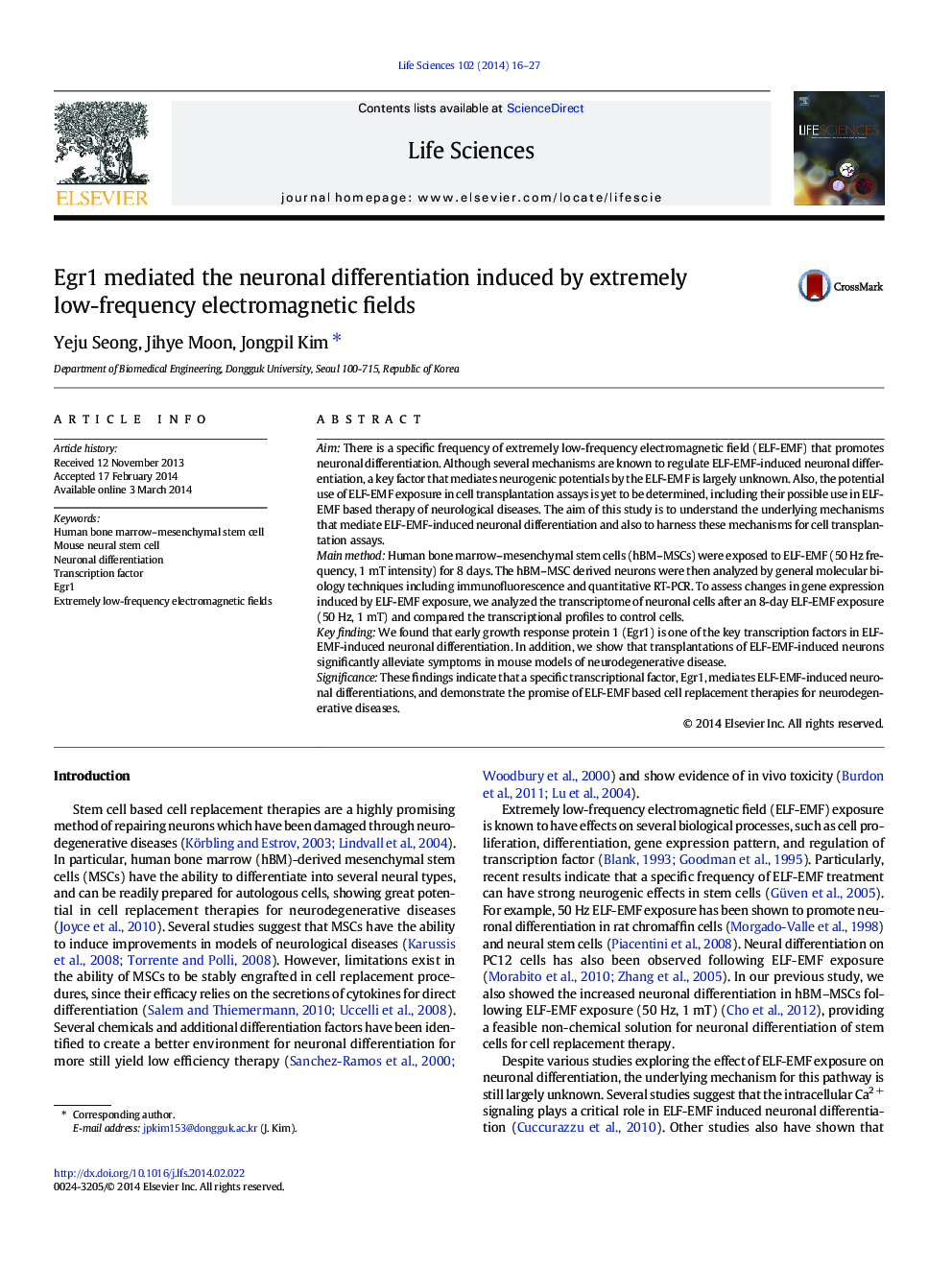| Article ID | Journal | Published Year | Pages | File Type |
|---|---|---|---|---|
| 2551200 | Life Sciences | 2014 | 12 Pages |
AimThere is a specific frequency of extremely low-frequency electromagnetic field (ELF-EMF) that promotes neuronal differentiation. Although several mechanisms are known to regulate ELF-EMF-induced neuronal differentiation, a key factor that mediates neurogenic potentials by the ELF-EMF is largely unknown. Also, the potential use of ELF-EMF exposure in cell transplantation assays is yet to be determined, including their possible use in ELF-EMF based therapy of neurological diseases. The aim of this study is to understand the underlying mechanisms that mediate ELF-EMF-induced neuronal differentiation and also to harness these mechanisms for cell transplantation assays.Main methodHuman bone marrow–mesenchymal stem cells (hBM–MSCs) were exposed to ELF-EMF (50 Hz frequency, 1 mT intensity) for 8 days. The hBM–MSC derived neurons were then analyzed by general molecular biology techniques including immunofluorescence and quantitative RT-PCR. To assess changes in gene expression induced by ELF-EMF exposure, we analyzed the transcriptome of neuronal cells after an 8-day ELF-EMF exposure (50 Hz, 1 mT) and compared the transcriptional profiles to control cells.Key findingWe found that early growth response protein 1 (Egr1) is one of the key transcription factors in ELF-EMF-induced neuronal differentiation. In addition, we show that transplantations of ELF-EMF-induced neurons significantly alleviate symptoms in mouse models of neurodegenerative disease.SignificanceThese findings indicate that a specific transcriptional factor, Egr1, mediates ELF-EMF-induced neuronal differentiations, and demonstrate the promise of ELF-EMF based cell replacement therapies for neurodegenerative diseases.
